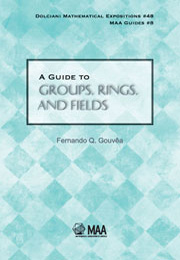2 - Categories
Summary
From the standpoint of category theory, all of mathematics is about objects and arrows: groups and homomorphisms, topological spaces and continuous functions, differentiable manifolds and smooth maps, etc. This gives a useful way of thinking about various mathematical theories, but more importantly it highlights connections between different theories, such as going from a topological space to its first homology group. Since categories are about objects and arrows, one expects functors to map objects to objects and arrows to arrows. It is the latter which turns out to be the fundamental insight: “functorial” constructions are important.
For our purposes, category theory is simply a convenient language in which to express relationships between algebraic structures, so we will not explore it in any sort of detail. This does not mean, however, that the theory is only a language. There are indeed theorems, some of them quite important, but here we will content ourselves with a minimal sketch.
Given the importance of categorical language in algebra, this material is treated in most advanced algebra textbooks; we looked particularly at [43] and [6]. For more detail and the real meat of the subject, the classical reference is [60]. A more recent reference requiring less mathematical background is [4].
CATEGORIES
Category theory can be seen as foundational or based on axiomatic set theory. In the latter case, we need to be careful because in many cases the objects in a category do not form a set, but rather a “proper class.” We will not emphasize the issue.
- Type
- Chapter
- Information
- A Guide to Groups, Rings, and Fields , pp. 9 - 16Publisher: Mathematical Association of AmericaPrint publication year: 2012



